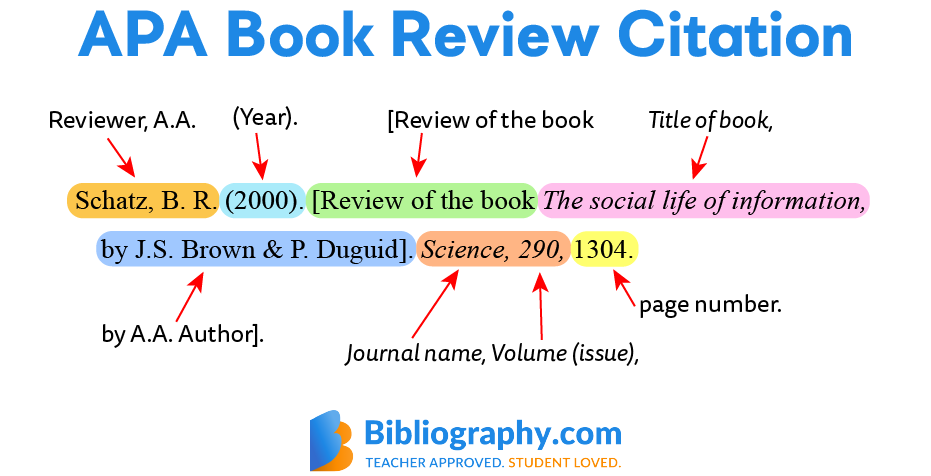In the labyrinthine world of literature, the act of reviewing a book transcends mere opinion; it is akin to presenting an intricate tapestry woven from threads of critical analysis, personal reflection, and scholarly rigor. One of the quintessential components of a book review is the art of citation. Thus, understanding how to correctly cite sources in a book review is not only essential to bolster the credibility of your critique but enhances the reader’s journey through your insights.
To grasp the significance of effective citation, one must first recognize the intricate balance between personal interpretation and established knowledge. Far from a mere obligatory task, citations serve as a bridge connecting your personal perspectives with the broader intellectual discourse surrounding a text. The sprightly engagement with source materials likens to a well-choreographed dance, where each citation strategically elevates your analysis while grounding it in scholarly context.
One fundamental principle of citation in book reviews stems from the necessity to provide readers with verifiable sources, thereby enhancing credibility. It often opens avenues for readers to explore further, feeding their curiosity while validating your assertions. Each citation you weave into your narrative manifests as an invitation for your audience to delve deeper into the subject matter, revealing layers of complexity that might otherwise remain concealed.
The format you adopt for your citations can vary widely depending on the style guide you choose to follow. The three predominant styles—APA, MLA, and Chicago—serve specific disciplines and audiences. Each format possesses unique characteristics that dictate not only how you present the bibliographic information but also how you structure in-text citations. Therefore, familiarity with these styles is indispensable.
In the American Psychological Association (APA) style, you might cite a source in the following way: when making a direct reference to an author’s argument, one might write, “As Smith (2020) elucidates, the very concept of agency in literature necessitates a nuanced understanding of character development.” This not only attributes credit effectively but also situates the reader within the context of ongoing academic discussions.
On the other hand, Modern Language Association (MLA) styles would necessitate a slightly more streamlined approach. In a book review styled in MLA, you might say, “The text elucidates this notion profoundly; as reflected in Smith’s keen analysis (123).” Using page numbers is crucial here, emphasizing the specific locus of your reference while inviting readers to engage directly with the source.
Where things can get intriguing, however, is in the interpretation of secondary sources. When your review draws from critiques or analyses conducted by others, effective citation practices require a nuanced touch. Citing secondary sources not only reinforces your critical stance but also compels readers to consider the multiplicity of interpretations surrounding a text. For example, you might assert, “Echoing Smith’s perspective, Jones posits that character motivations reflect broader societal constructs (45).” This generates a dialogue between sources, embellishing your review with multi-dimensional insights.
Now, while technical precision in citation is non-negotiable, the tone and integration of citations matter immensely too. For instance, weaving them seamlessly into your narrative can evoke a sense of continuity, enabling readers to engage without jarring interruptions. A citation can dance alongside your prose rather than serving as a stumbling block. It can be as simple as, “This theme resonates throughout the narrative, particularly in alignment with Johnson’s hypothesis concerning existentialism.” Such fluidity allows for a more engaging reading experience while foregrounding the cited material.
Moreover, the ethical implications of citation cannot be overstated. Plagiarism, a transgression that stifles creativity within the intellectual community, can be effortlessly sidestepped through diligent citation practices. It is a call to honor the intellectual contributions of others, cultivating a culture of respect and collaboration rather than appropriation. The act of citing becomes an ethical obligation that enriches the reader’s experience while acknowledging the scaffold upon which your own thoughts have been constructed.
In a rapidly evolving digital landscape, it is equally vital to navigate the challenge of citing online sources or digital texts. Electronic materials often lack pagination, which can alter the traditional frameworks of citation. Adhering to contemporary guidelines and including comprehensive information—such as URLs or DOI numbers—ensures that readers can trace your research paths effectively, fostering an environment of transparency.
In conclusion, mastering the craft of citing in a book review is akin to wielding a sophisticated toolset, employing each component with precision and eloquence. Each citation you choose to include serves as a cornerstone in the edifice of your critical analysis, inviting readers into an expansive conversation that extends beyond the pages of the review itself. By embracing citation not as a chore but as an integral facet of your literary examination, you not only foster a deeper connection with your readers but contribute meaningfully to the ongoing dialogue surrounding literature. So, take your pen, turn your thoughts into sentences, and weave the strands of citation into your review; the literary community awaits your insights!
